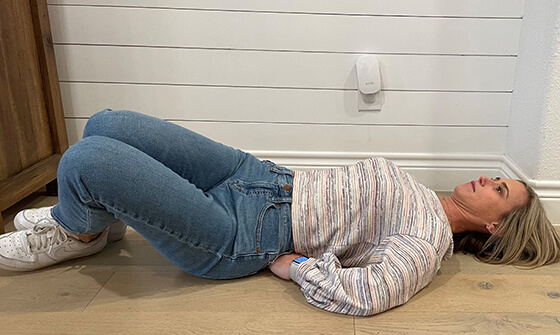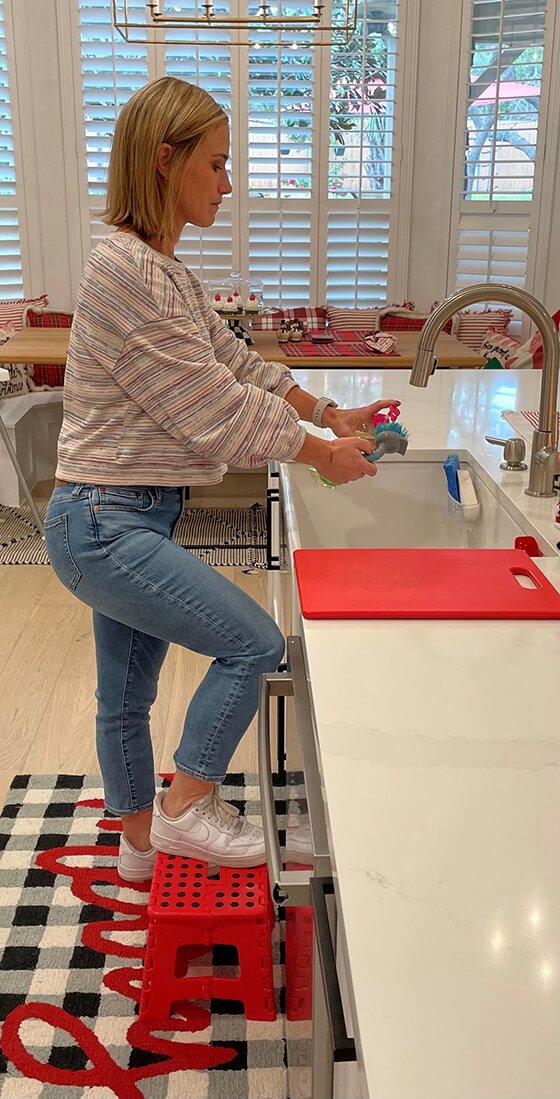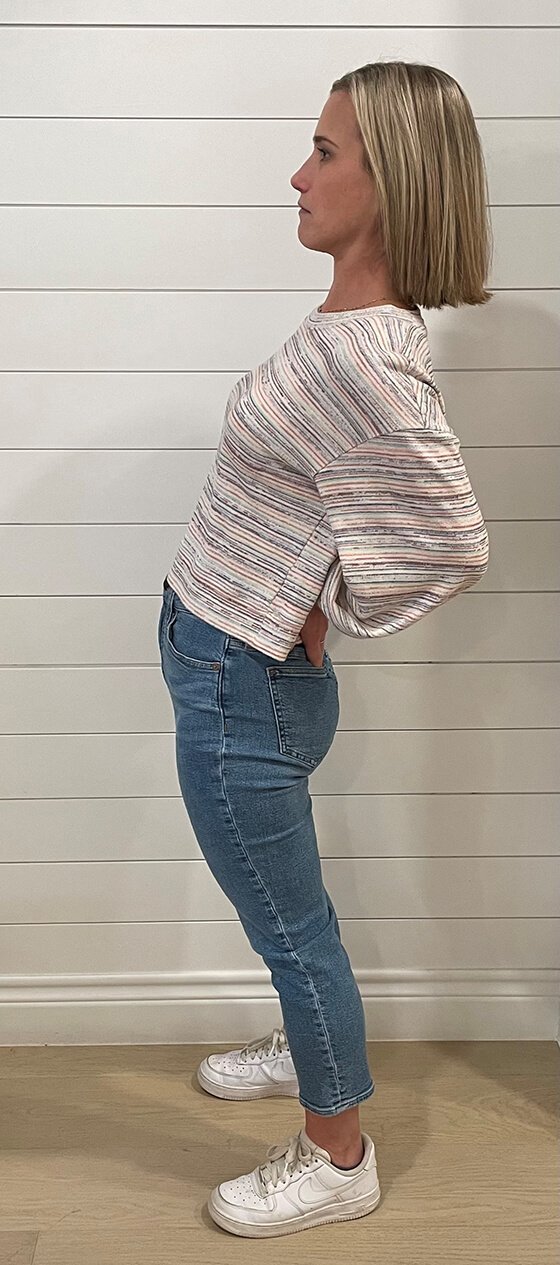Managing your back pain during the hustle and bustle of life
Empower yourself to seek care that makes a life-long difference
Posted 12/18/2023 | 5 min. read
Raise your hand if you have back pain when you stand while cooking dinner, lifting your kids or completing tasks at work.
Raise your hand if you wake up with back pain every day.
Raise your hand if you have ever felt personally victimized by back pain.
Lower back pain – what is it?
Lower back pain (LBP) is more prevalent than you think it is.
LBP exists in the lumbar (bottom) part of your spine. This area of the spine consists of five bones, and around these bones there are nerves, muscles, tendons, ligaments and intervertebral disks.
This region of your body does a lot of heavy lifting on a daily basis. It experiences a lot of movement and stress, which may lead to wear, tear and injuries.
Many people take medicine every day for back aches or nerve pain shooting down into their legs from their spine. They continue to adjust their sitting position because their posture is hurting their back. They toss and turn in bed at night because it’s uncomfortable.
Everyone experiences it in a different way, and you wouldn’t believe the amount of people who have the same symptoms as you.
Most people will have some sort of back pain in their life, whether it’s acute or chronic.
Some will go their entire lives with back pain and never seek the answer as to why.
Isn’t it kind of crazy that so many of us just carry on about our days thinking daily pain is normal?
So, let’s get serious and take a look at what’s going on with our backs.
What causes lower back pain?
When doctors and physical therapists assess back pain, they might associate your pain to a condition, a disease or an injury to the muscles or tendons from a sports accident, work accident, tweaking it, etc.
They might also mention the following conditions, which can develop over time if you leave your back pain untreated:
Sciatica: This occurs when there is something, like a bone or a disc, pressing on the sciatic nerves. The sciatic nerves are two of the thickest and longest nerves in the body, and they each start at the base of your spine. Pressure applied here literally causes pain “on your nerves.”
Spinal stenosis: This condition is caused by your nerve roots becoming pinched as a result of limited space in your spinal canal. It mostly happens in the lumbar region and is mainly triggered by aging. As time moves on, slipped discs and bone spurs can cause pinched nerves.
These two sound kind of similar, right?
Yes.
Once you develop spinal stenosis, sciatic pain can soon follow after.
The presence of sciatica, especially if your leg pain extends to the knees, with signs of nerve root compression increases risk for lower back issues and increased health care visits, sometimes including surgery if not treated properly and in a timely manner.
Scary, and a good reason not to leave your pain untreated.
With early interventions, including physical therapy, the possibility of being completely pain-free is a reality.
Every day activities that cause LBP
Lower back pain is a prevalent issue affecting millions worldwide. Surprisingly, the source of this discomfort often lurks in our daily routines or in areas where you think lower back pain wouldn’t be an issue.
One of the most common causes of LBP is muscle strain or a sprain. This usually occurs due to sudden movements or overexertion during physical activities, but can be associated with an underlying chronic issue like arthritis.
Strained muscles and ligaments can lead to localized pain and stiffness in the back.
You may be thinking, “Well, I’m probably fine. Most people who have back pain are old, anyway.”
False.
It’s not just the elderly that experience pain with every day activities. Young adults, athletes, a person who sits all day at a corporate job, a health care worker, a model, a frequent flyer— anyone can experience it.
It can also be seen with:
- Prolonged sitting – Sitting for extended periods, whether at a desk, in a car, on a plane or on the couch can strain the lower back muscles. Have you ever stood up after a few hours in the car and noticed that your back was stiff and first step feels weird or painful?
- Poor posture – Slouching, hunching over devices or maintaining improper posture while sitting or standing can place additional stress on the back.
- Heavy backpacks or bags – College students or business professionals are usually sufferers of this. Carrying a heavy backpack or purse on one shoulder can lead to uneven weight distribution, causing strain on the back and shoulders.
- Improper lifting – Lifting heavy objects using the back instead of the legs or twisting while lifting can result in back strain and potential injury, especially if you work a more labor-intensive job.
- Inactivity – Being inactive can weaken the muscles that support the spine. Simply taking a walk or working out in the gym a few days a week can help maintain your flexibility and strength.
- Sleeping positions – If you like to sleep flat on your stomach, your neck is put in an unnatural position and the curvature of your spine can flatten. If you side sleep, you should sleep with a pillow between your legs to keep your pelvis, spine and hips aligned. It’s suggested that laying on your back, perhaps with a small pillow under your knees, is the optimal sleeping position.
- Stress and tension – Emotional stress can manifest physically, often leading to muscle tension in the back and worsening existing pain.
- Repetitive movements – Participating in constant activities without proper breaks or adjustments can strain the back muscles, causing more pain over time.
- Smoking – If you smoke regularly, it reduces blood flow to the spine, limiting essential nutrients. It may also contribute to degeneration of your spinal disks.
- Excessive smartphone use – Constantly looking down at your phone or tablet can strain the neck and upper back, potentially leading to lower back pain as well.
By being mindful of what you do in a day that could put strain on your back and making small adjustments, you can minimize the risk of debilitating back pain.
Physical therapy is the answer
When seeking relief for lower back pain, many individuals immediately turn to their primary doctor or urgent care because it’s quick and easy. Most of the time, they aren’t presented with other options, so they’ll stick to what they know: seeing their doctor.
Back pain is the second most common reason for a primary care visit and the costliest medical condition – coming in at approximately $90 billion – in the United States. It has also been the leading cause of disability globally for at least three decades.
It’s a continuous cycle if you think about it.
A patient will see their doctor for both chronic or new back pain.They’ll then be prescribed medicine or opioids, depending on their pain levels. Or, perhaps they’ll be told of some exercises they can do at home to maybe help them feel better, although these are commonly generalized and not specific to that person’s pain.
Back pain has become mismanaged by many health care providers, and physical therapy can often be overlooked as an option because it’s not a “quick fix,” it’s not what people can see themselves doing long-term to manage their pain or they may not even know it’s an option.
There are more holistic and natural ways to relieve back pain instead of taking pain medication, which only temporarily treats the pain. This is why there’s an opioid epidemic among us.
Physical therapy will provide you with a better, everyday lifestyle. Your pain and suffering can end.
A skilled physical therapist can play a crucial role in assessing, treating and preventing your LBP by providing:
- Comprehensive assessment – They evaluate your posture, muscle strength, joint mobility and functional movements to find imbalances.
- Customized treatment plan – A physical therapist will create a program for you that’s tailored to your needs, goals and condition.
- Strengthening exercises – By doing physical therapy exercises, you’ll be able to improve your core strength, back and supporting muscles, which can help with overall spine pain.
- Range of motion exercises – Physical therapists will incorporate stretching and flexibility exercises to increase range of motion in the spine and surrounding muscles. You’ll be able to reduce your stiffness and alleviate your pain.
- Manual therapy – Hands-on techniques such as joint mobilization and soft tissue manipulation are commonly used in physical therapy programs to help reduce muscle tension.
- Education – As you continue physical therapy.
While seeing your doctor can be helpful, there tends to be a lot of mismanagement with medicine and imaging that you may not need, ultimately costing you more money. Taking medicine for long periods of time can end up masking pain instead of treating it at its core.
Again, physical therapy is the answer to your lower back pain. Movement is medicine.
Stretch it out
Between now and your scheduled appointment with a licensed physical therapist, if you want a cost-free, quick remedy that you can do at home, here are a few lower back exercises and stretches to give you some back relief.
Biking or walking for 10 minutes –simply getting up and moving in any form that is relatively pain free can lead to some immediate pain relief.
Lower trunk rotation – lie on your back with both knees bent. With your back flat against the floor, keep your knees together while rocking them side to side. This will create a slight trunk rotation. Stay within a pain free range of motion.
Spinal offloading – this technique can be helpful when you have pain with extended standing. Placing one leg on a small stool while doing functional activities, such as washing the dishes, can help to alleviate the pain that occurs with static postures. If you have pain on one side of the low back, raise the leg on that side, if your pain is in the center, you can alternate which leg is raised. Do what works best for your own individual pain relief!
Back bends – this technique is most useful when you have pain when sitting for long periods of time. It is recommended that we change our posture often throughout the day. If you are able to stand on an hourly basis and perform 10 back bends, this can help with your sitting pain. Stand with your hands placed gently on your low back. With a neutral neck, lean backwards creating a backbend in your lumbar spine.
Start with these home exercises and stretches and see how comfortable you are. Don’t be scared to try any of them – just get a feel for it and see if you have any relief in your back.
Remember, only you can affect your pain. If you want relief and your pain isn’t improving, request an appointment to explore which pathway is best for you and your health.



